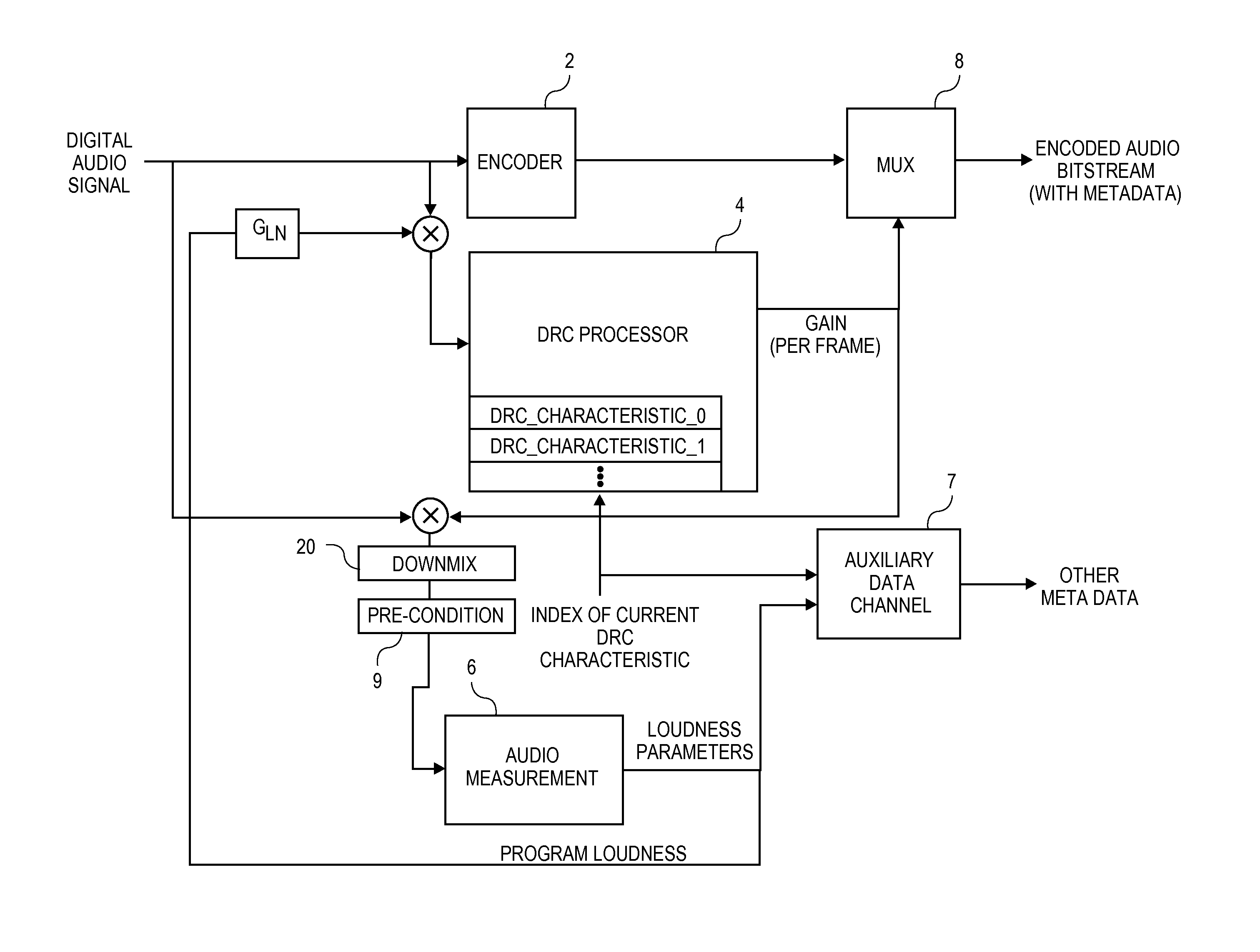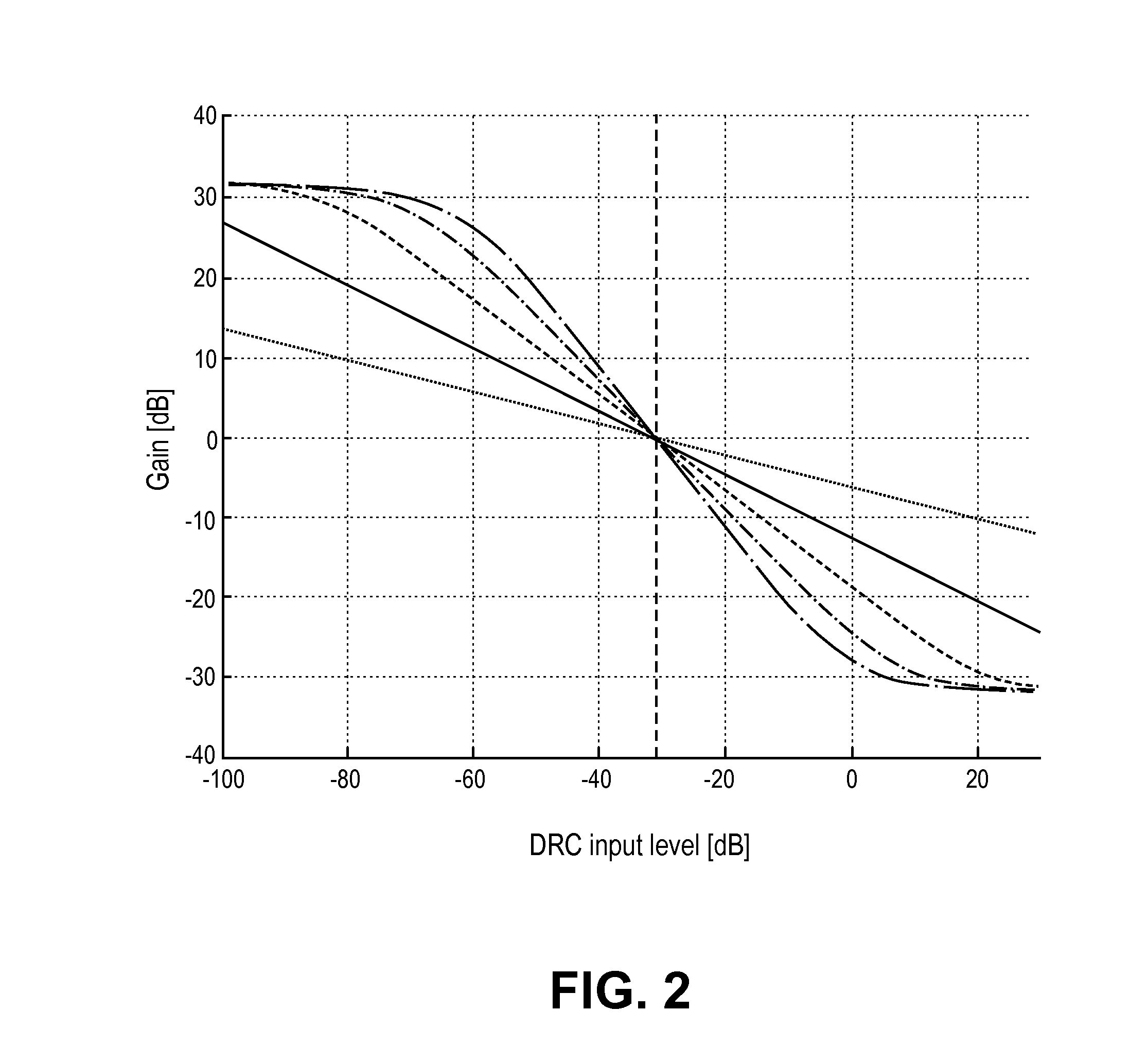Metadata for loudness and dynamic range control
a dynamic range and loudness technology, applied in the field of loudness and dynamic range control, can solve the problems of lossless data compression, dynamic range limitation, unsatisfactory user experience during playback, etc., and achieve the effect of improving the user experien
- Summary
- Abstract
- Description
- Claims
- Application Information
AI Technical Summary
Benefits of technology
Problems solved by technology
Method used
Image
Examples
example metadata
[0064 that describes aspects of the dynamic range
Loudness RangeSize of range derived from loudness histogramProgram LoudnessThis value can be combined with one of the peakvalues below to estimate the dynamic rangeTrue PeakCould use the difference (True Peak) − (ProgramLoudness) as dynamic range estimate. The True Peakcan change significantly after the original audiocontent or audio program has passed through thecodecMax. momentary A description of the loudness peak, that won't changeloudness much after the codec. The window size may be(e.g., 0.4 s)compatible with ITU BS.1770. Subtract ProgramLoudness to get an estimate of the dynamic range.Max. short A description of the loudness peak, that won't changeterm loudness much after the codec. The window size is longer than(e.g., 3 s)the one in ITU BS.1770. Subtract Program Loudnessto get an estimate of the dynamic range.
[0065]A DRC processor is used in the encoder stage to generate gain values using a selected one of the pre-defined DRC ...
PUM
 Login to View More
Login to View More Abstract
Description
Claims
Application Information
 Login to View More
Login to View More - R&D
- Intellectual Property
- Life Sciences
- Materials
- Tech Scout
- Unparalleled Data Quality
- Higher Quality Content
- 60% Fewer Hallucinations
Browse by: Latest US Patents, China's latest patents, Technical Efficacy Thesaurus, Application Domain, Technology Topic, Popular Technical Reports.
© 2025 PatSnap. All rights reserved.Legal|Privacy policy|Modern Slavery Act Transparency Statement|Sitemap|About US| Contact US: help@patsnap.com



